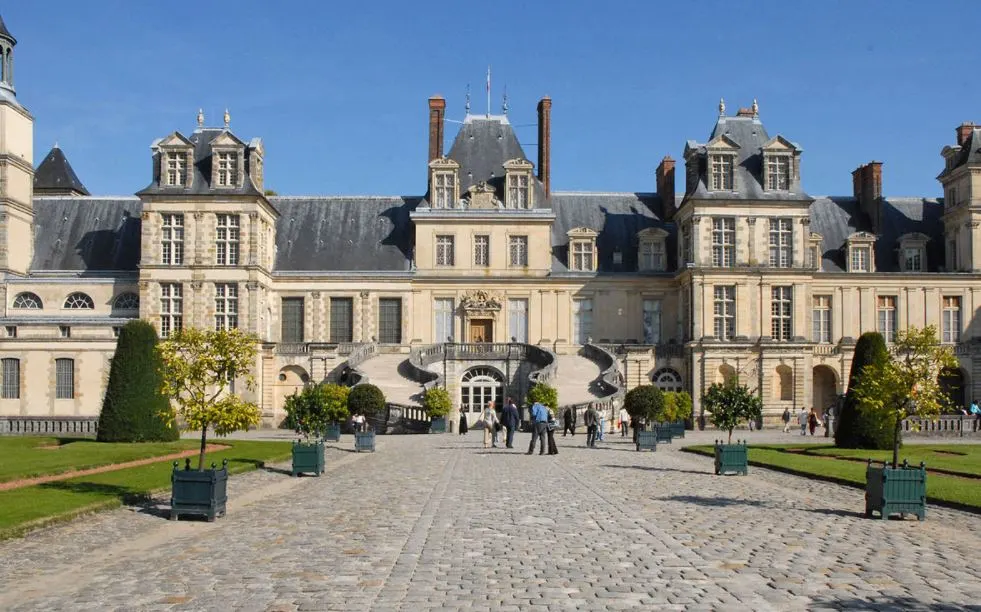This immense structure originally started as one of Europe’s many fortified castles, but eventually became one of the most astounding palaces in the world.
In this article, we’ll take a closer look at some of the most interesting facts about the Château de Fontainebleau and its history, one of the most fascinating landmarks in France.
1. The immense building is located just southeast of Paris
The Château de Fontainebleau, also sometimes referred to as the “Palace of Fontainebleau,” is one of the largest royal residences in France. It’s located at a distance of about 55 kilometers (34 miles) to the southeast of the center of Paris.
The huge building consists of a total of about 1,500 rooms and is situated within a park that covers an area of 130 hectares (321 acres). The garden also features the largest parterre in Europe as it covers an area of 11 hectares (27 acres).
It’s fair to conclude that this is one of the most exuberant structures in Europe!

2. It was originally built as a castle near a popular hunting spot
The original structure was built as a fortified castle and dates back to at least the year 1137. It served as the residence of the Kings of France from King Louis VII in the 12th century all the way to Napoleon III in the 19th century.
The main reason why it became one of the most popular residences among French monarchs was the fact that the immense forest surrounding it was full of game and deer that could be hunted.
After all, hunting was the favorite pastime of many of the French Kings.
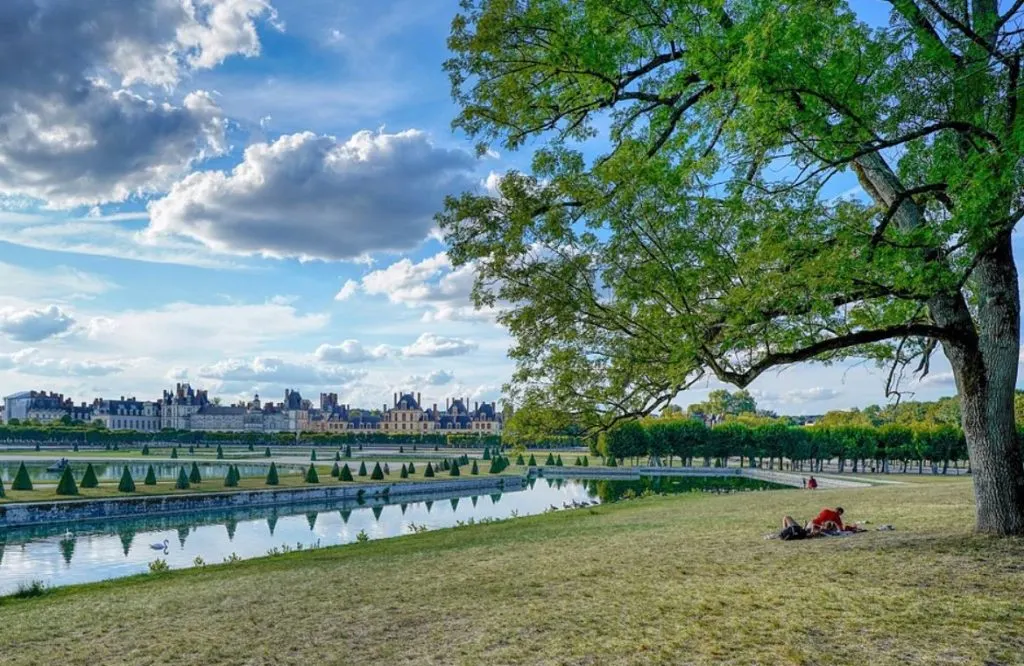
3. The palace was expanded by Francis I around the medieval donjon
One of the most interesting facts about the château de Fontainebleau is that a chapel was constructed in the 12th century and was consecrated in 1169 by Thomas Becket, the Archbishop of Canterbury who was murdered the following year.

The first major expansion phase of the medieval castle happened in the 16th century during the reign of King Francis I. New sections were added to the castle around the Oval Courtyard, the location of the medieval donjon, and the King’s apartments.
This means that this section of the building was built on top of the medieval foundations of the old fortification.

4. A new style that came from Italy was introduced here to France
One of the most remarkable facts about the Château de Fontainebleau is that the first major expansion phase introduced a completely new architectural style to France.
The early 16th century was the high point of the Renaissance in Italy and this style was introduced to France for the first time right here in both the Oval Courtyard and the Gallery of Francis I.
The Gallery of Francis I was built between 1533 and 1539 and connected the King’s apartments with the chapel of the château.

5. The magnificent ballroom dates back to the 16th century
Henry II and Catherine de’ Medici took over the expansions during the 16th century following the death of Francis I, and they didn’t hold anything back either.
One of the most impressive rooms of the entire château was completed during this period. Italian Mannerist artists such as Nicolo dell’Abate and Francesco Primaticcio decorated the opulent ballroom, a project that started in the year 1552.
Multiple additions to this room were made over the centuries, all the way to the reign of Louis-Philippe in the 19th century who integrated a new floor that resembles the magnificent ceiling.

6. King Louis XIV spent a lot of time here but not to build
One of the most intriguing facts about the Château de Fontainebleau is that King Louis XIV was the monarch who spent most of his time here. One would think that he could remain quite occupied at the enormous Palace of Versailles that he built, right?
The main reason why he enjoyed spending so much time here is that he also liked hunting, and this remained the best residence to do so.
His main contribution to the palace was the enormous parterre which he transformed into a formal French garden, a work completed by his favorite landscaping architects André Le Nôtre and Louis Le Vau.
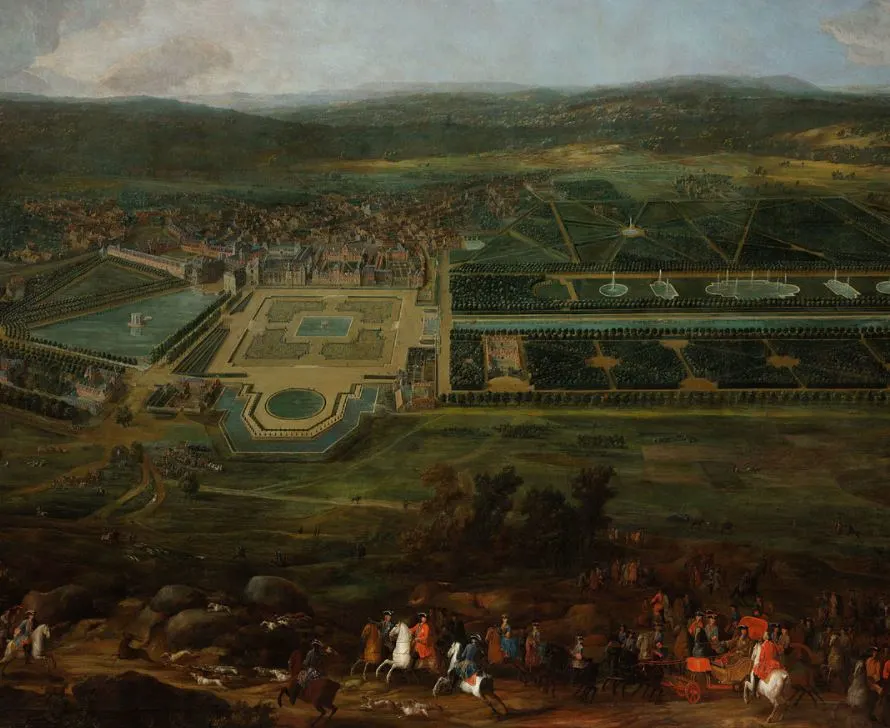
7. King Louis XV built new royal apartments between 1750 and 1754
Even though King Louis XIV didn’t add any major structures to the already enormous building, it wasn’t quite big enough for his successor, King Louis XV.
A completely new courtyard was built between 1737 and 1738 to become the new home of the huge entourage of the King. One of the most impressive new structures built during the 17th century was the so-called “Gros Pavilion,” completed between 1750 and 1754.
This structure was designed to house the new extremely luxurious apartments of the King and Queen of France. Many of these exuberant rooms were decorated by some of the leading Rococo artists at the time, including François Boucher, Carle Vanloo, Jean-Baptiste Marie Pierre, and Alexis Peyrotte.
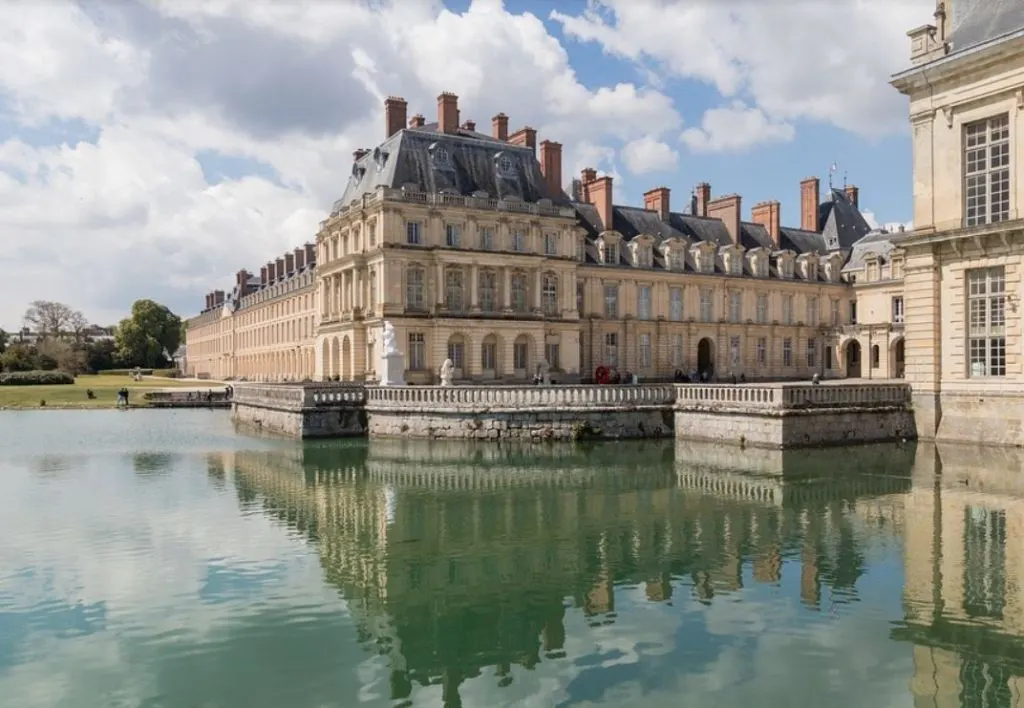
8. Marie Antoinette never got to sleep in the bed designed for her
The final monarch before the French Revolution was King Louis XVI and he also added an entirely new block of royal apartments, right next to the Gallery of Francis I.
He also included a Turkish-style salon, a game room, and a boudoir in the arabesque style for his queen Marie Antoinette. The luxurious new bed he bought for her was never used by her because both the King and Queen had already been beheaded at the Place de la Concorde by the time it arrived in 1797.
It was used later, however, by both Empresses Josephine and Marie-Louise.
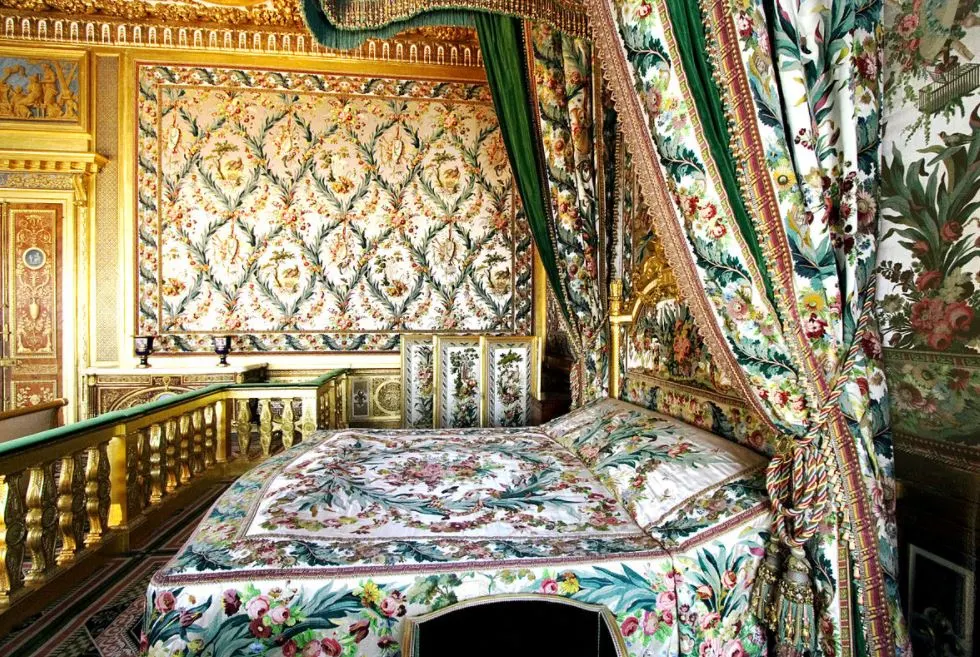
9. The Pope was a prisoner here for about 2 years
After Napoleon seized power following the French Revolution, he invited Pope Pius VII to the Château de Fontainebleau for a meeting. The Pope eventually presided over the Coronation of Napoleon as Emperor of France on December 2, 1804, an event that happened at Notre-Dame Cathedral in Paris.
The relationship between the two became troubled following Napoleon’s invasion of the Papal States, and the Pope eventually ended up being transported to France.
Napoleon had the château completely refurbished for the initial visit of the Pope in 1804, and he ended up keeping him as a prisoner in this very building between 1812 and 1814, quite a remarkable turn of events!
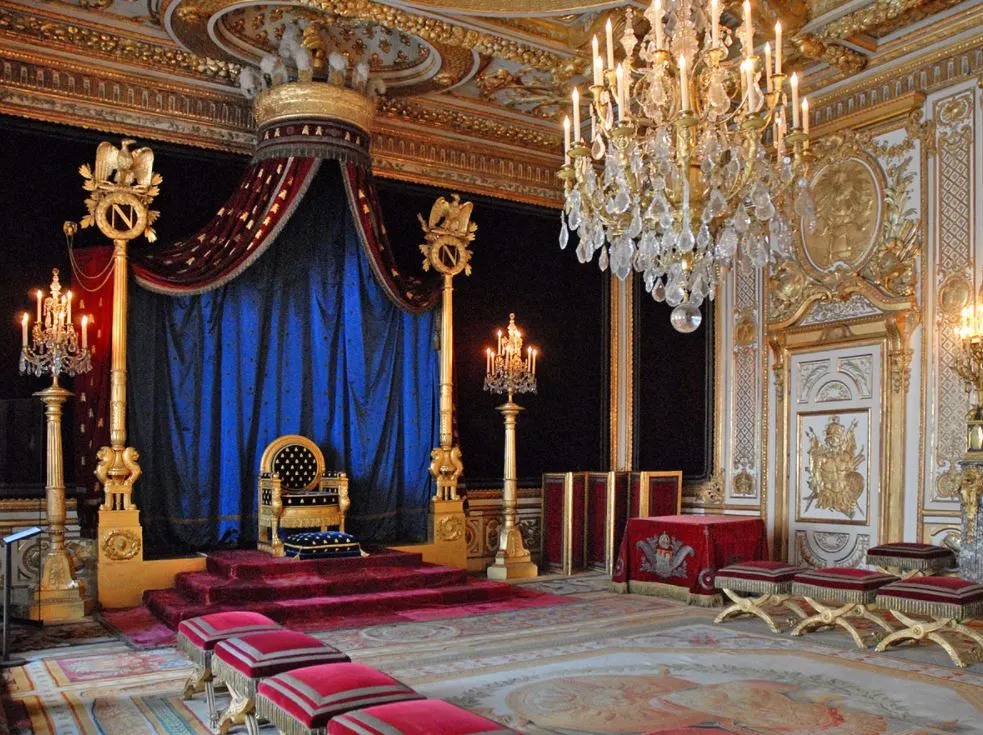
10. Napoleon signed his abdication on a table inside the château
Napoleon had overplayed his hand multiple times during various military campaigns, something that eventually resulted in his forced abdication in 1814.
One of the most amazing facts about the Château de Fontainebleau is that the table where he signed his abdication is still on public display here.
This is where he put his signature before he said his goodbyes to his guards and was exiled to Elba. He remarkably returned the following year but was ultimately defeated in 1815 during the Battle of Waterloo.
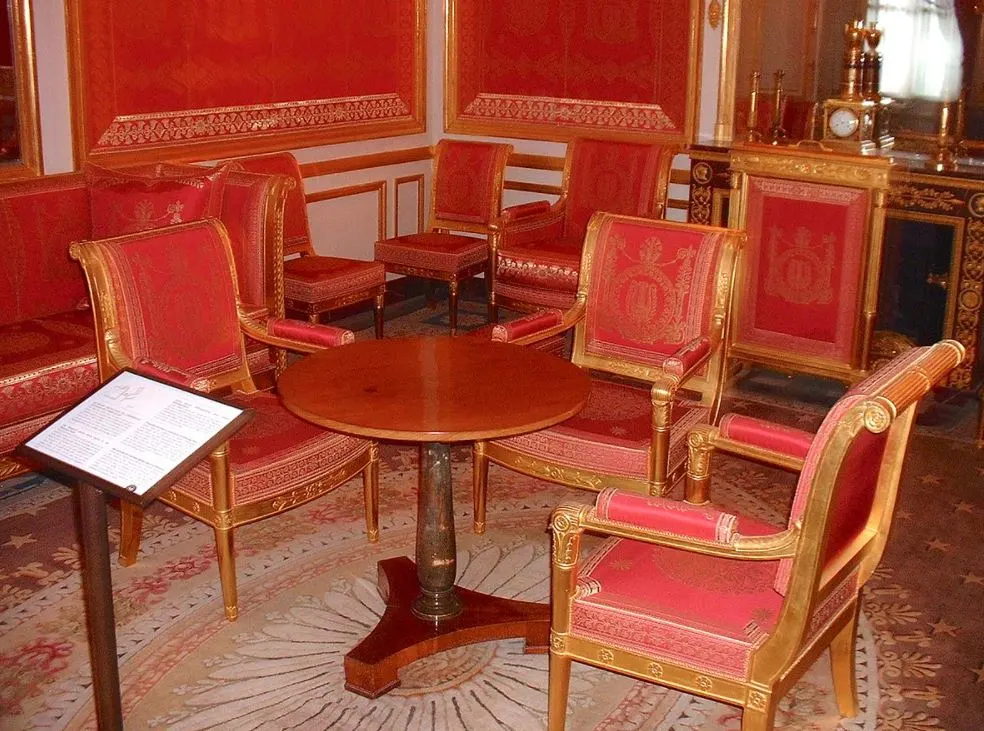
11. The Gallery of Diana became a library in the 19th century
One of the most fascinating rooms inside the château is the “Gallery of Diana.” This space has a total length of 80 meters 242.2 (feet) and was originally built by King Henry IV so his Queen could go for an enjoyable walk every day (if you do something, you better do it well).
This space was in ruins following the French Revolution and Napoleon decided to turn it into a gallery to display all his amazing victories in the year 1810.
It eventually ended up being redesigned in the Neoclassical style by King Louis XVIII and turned into a library lined with thousands of books.
The globe near the entrance of the Gallery of Diane was brought here in 1861 and originally stood in Napoleon’s office at the Tuileries Palace, a structure that was located within the Tuileries Garden in Paris that was destroyed by fire in 1871.
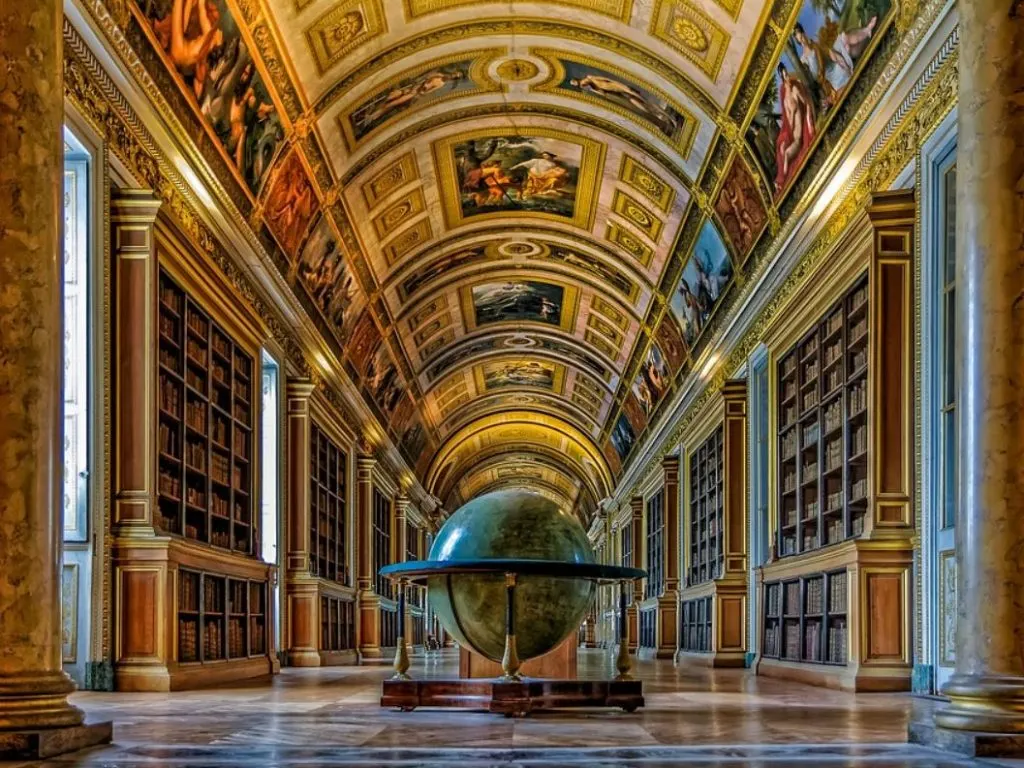
12. The theater was named after an Abu Dhabi sheik in 2014
The palace features a lot of entertainment facilities for its residents, including a magnificent theater. This was built during the reign of Napoleon III in 1856 and replaced an original theater in another location of the palace.
Even though it’s not as grandiose as the Palais Garnier in Paris that he commissioned, it’s quite amazingly ornamented. It was deemed too small though and was rarely used, eventually ending up being closed altogether.
Money to restore the theater came from an unlikely source in 2007 as 10 million euros was donated by the government of Abu-Dhabi. In return, this magnificent space is now called the “Sheikh Khalifa bin Zayed Al Nahyan Theater.”

13. The last room to be designed became a Chinese Museum
One of the final additions of the palace was the decoration of space on the ground floor of the “Gros Pavilion,” the enormous structure built by King Louis XV during the 18th century.
The room was decorated by Empress Eugenie in 1867 and was originally intended to house her personal collection of Chinese art. These included gifts from the King of Siam in 1861 and objects stolen during the looting of the Old Summer Palace near Beijing in 1860.
Today, the Chinese Museum is a section of the Château de Fontainebleau and is considered to be one of the oldest museums dedicated to Asian art in the world.

14. The château is a national museum and UNESCO World Heritage site
The château eventually ended up being transformed into a national museum and is open to the general public. It was completely restored during the 1960s during the reign of President Charles DeGaulle.
As it has well over 800 years of history as a royal residence, it has also been listed as a UNESCO World Heritage site in 1981 and is one of the main tourist attractions in France just outside of Paris.
